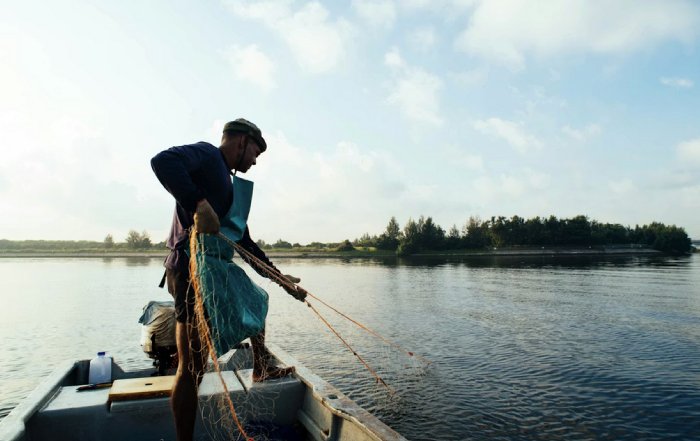How to Build a Rain Garden for Stormwater Management in 2025
Rain Gardens at the Heart of Modern Sustainable Living
In 2025, as cities and communities around the world confront more intense storms, flash flooding and mounting pressure on aging drainage systems, the concept of the rain garden has moved from niche landscaping idea to a practical, evidence-based tool for stormwater management and climate adaptation. For readers of eco-natur.com, who are already engaged with themes such as sustainable living, plastic reduction, habitat protection and resilient local economies, the rain garden represents a rare convergence of aesthetics, ecology and sound business sense. It is a small-scale intervention with outsized benefits: it helps control runoff, filters pollutants, supports biodiversity, and enhances property value, all while strengthening community resilience to extreme weather.
A rain garden is essentially a shallow, landscaped depression designed to capture and infiltrate stormwater from roofs, driveways, streets and other hard surfaces. Instead of water rushing into storm drains and nearby rivers, carrying sediments, microplastics and chemicals, it is slowed, spread and soaked into the ground where plants, soil organisms and natural filtration processes can do their work. Organizations such as the United States Environmental Protection Agency (EPA) have long highlighted rain gardens as a key element of green infrastructure; readers can explore broader context on green infrastructure and stormwater to understand how these systems reduce urban flooding, improve water quality and create more livable cities.
For eco-natur.com, rain gardens are not just technical features; they are tangible expressions of a lifestyle and business philosophy that connects sustainability, health, biodiversity and economic resilience. Building one, whether at a home, school, office campus or retail site, is a concrete step toward aligning everyday spaces with planetary boundaries and community wellbeing.
Why Stormwater Management Demands New Solutions
Across North America, Europe, Asia and beyond, climate data compiled by institutions such as NASA and the National Oceanic and Atmospheric Administration (NOAA) show that extreme precipitation events are becoming more frequent and intense. Readers interested in the scientific backdrop can review the latest analyses on climate change and extreme weather to appreciate how warmer air holds more moisture, leading to heavier downpours that overwhelm traditional drainage systems. In dense urban areas from New York to London, Berlin, Toronto, Sydney and Singapore, paved surfaces prevent water from infiltrating the soil, channeling it instead into storm sewers that may quickly reach capacity, resulting in localized flooding, property damage and water contamination.
Conventional stormwater infrastructure, based on pipes, culverts and detention basins, was designed for a climate that no longer exists. It often fails to address diffuse pollution from streets, parking lots and industrial sites, where oil, heavy metals, nutrients and microplastics are washed into rivers and coastal waters. Organizations such as the World Resources Institute have documented how nonpoint source pollution contributes to dead zones and degraded aquatic ecosystems; readers can learn more about water quality challenges and see why decentralized, nature-based solutions are gaining momentum in policy and practice.
Rain gardens, bioswales, green roofs and permeable pavements are all part of the green infrastructure toolbox that cities from Copenhagen to Seoul and Wellington are adopting to manage stormwater more intelligently. For businesses and property owners, integrating such features is increasingly framed not only as environmental stewardship but also as risk management, cost containment and brand positioning. This aligns closely with the themes explored in eco-natur.com's coverage of sustainable business and economy, where ecological performance and financial performance are seen as mutually reinforcing rather than competing goals.
The Principles Behind an Effective Rain Garden
To build a rain garden that truly functions as a stormwater management asset rather than a decorative afterthought, it is important to understand several core principles. First, the garden must be located where it can receive runoff from impervious surfaces, such as a downspout draining a roof, a driveway or a compacted patio. Second, it must be designed to temporarily hold water, typically for no more than 24 to 48 hours, allowing infiltration without creating standing water that could attract mosquitoes. Third, it should be constructed with a soil mix that balances permeability and nutrient content, and planted with species adapted to alternating wet and dry conditions.
Guidance from organizations such as the Royal Horticultural Society in the United Kingdom provides regionally appropriate advice on gardening for climate resilience, illustrating how plant selection and soil preparation can enhance water absorption and reduce runoff. For eco-conscious homeowners and facility managers, these principles echo broader themes of sustainable lifestyle choices: working with natural processes rather than against them, prioritizing local conditions and biodiversity, and designing spaces that deliver multiple ecosystem services.
A well-designed rain garden also supports wildlife by providing nectar, seeds and shelter for pollinators, birds and beneficial insects, thereby complementing the goals discussed in eco-natur.com's focus on wildlife and biodiversity. In urban and suburban contexts where habitat fragmentation is severe, each rain garden becomes a small but significant node in a wider ecological network, contributing to corridors that help species move, feed and reproduce.
Site Assessment: Reading the Land Before Digging
Before any soil is turned, a thorough site assessment is essential. This process, which may seem time-consuming, is where expertise and long-term thinking pay off. The first step is to map how water currently moves across the property. Observing rainfall events, noting where puddles form, and identifying downspouts and low-lying areas provide valuable clues. Tools such as local topographic maps and online resources from agencies like the U.S. Geological Survey can help users understand local drainage patterns and soil types, which influence infiltration rates and plant suitability.
Next, it is important to conduct a simple infiltration test in the proposed rain garden location. By digging a small test hole, filling it with water and timing how long it takes to drain, property owners can assess whether the site can absorb stormwater within the desired time frame. If water remains after 24 hours, the location or design may need to be adjusted, or soil amended more significantly. This attention to detail reflects the same commitment to evidence and performance that underpins responsible sustainable design and green building practices globally.
Regulatory considerations also play a role, particularly for commercial sites and multi-unit residences. Many municipalities in the United States, Europe and Asia now have stormwater regulations, incentives or fee structures that reward on-site retention. Consulting local planning authorities, reviewing guidance from organizations such as ICLEI - Local Governments for Sustainability, and exploring their resources on urban resilience and water management can help businesses align projects with policy frameworks and potentially access grants or tax benefits.
Sizing and Shaping a Rain Garden for Performance
Determining the size of a rain garden involves balancing available space, expected runoff volume and soil infiltration capacity. A commonly cited rule of thumb is that the rain garden's surface area should be between 10 and 20 percent of the impervious area draining to it, though this can vary depending on climate, rainfall intensity and soil conditions. For example, in regions of the United States or Europe with frequent heavy downpours, or in areas of clay-rich soil, a larger garden or multiple smaller gardens may be appropriate. Technical guidance from institutions such as Penn State Extension or University of Wisconsin Extension (both recognized leaders in rain garden research) offers detailed calculations and design charts; interested readers can explore how to size rain gardens based on local rainfall and soil to refine their projects.
The shape of a rain garden is typically an elongated oval or kidney form, oriented perpendicular to the slope of the land to maximize water capture. The bottom should be relatively flat to distribute water evenly, with gently sloping sides that integrate smoothly into the surrounding landscape. An inlet, such as a rock-lined channel from a downspout, directs water into the basin, while an overflow outlet, often a shallow swale or a connection to an existing drain, provides a safe escape route for excess water during extreme events. These design details underscore the importance of treating the rain garden as functional infrastructure, not merely ornamentation.
In commercial contexts, such as office parks, retail centers or light industrial facilities, the same principles apply but often at a larger scale. Here, rain gardens can be integrated into parking lot medians, building setbacks or perimeter landscaping. Organizations like the Green Building Council in various countries, including the U.S. Green Building Council, highlight how such features contribute to green building certifications; readers can learn more about sustainable site credits and see how rain gardens fit into broader sustainability strategies for real estate and corporate campuses.
Soil, Plant Selection and the Plastic-Free Imperative
The performance of a rain garden depends heavily on its soil profile. Typically, a mix of sand, compost and topsoil is used to create a medium that drains well while retaining enough moisture and nutrients to support plant growth. In many projects, existing compacted soil is removed to a depth of 45 to 60 centimeters, then replaced with this engineered mix. This approach aligns with best practices in regenerative landscaping, which emphasize soil health, organic matter and microbial activity as foundations of ecosystem function. Readers who are exploring organic food systems will recognize similar principles at work: healthy soils are not just a medium for plants, but living systems that cycle nutrients, store carbon and filter pollutants.
Plant selection should be guided by local climate, native ecosystems and maintenance expectations. Native species are generally preferred, as they are adapted to regional conditions, support local wildlife and often require less irrigation and fertilization once established. For the United States, resources from the Lady Bird Johnson Wildflower Center provide detailed plant lists and design ideas for native rain garden species, while in Europe, organizations such as Plantlife and national botanical gardens offer comparable guidance. In Asia, Australia, Africa and South America, local conservation groups and agricultural extension services can provide regionally appropriate recommendations.
From the perspective of eco-natur.com, there is an additional dimension: minimizing plastic use throughout the project. Traditional landscaping often relies on plastic weed barriers, synthetic fertilizers in plastic packaging, and plastic irrigation components. By contrast, a rain garden designed with a plastic-free ethos prioritizes natural mulches such as wood chips or shredded bark, organic soil amendments, and durable, repairable materials for edging or water conveyance, such as stone or untreated timber. Even plant sourcing can be reconsidered, favoring nurseries that use biodegradable pots or take-back schemes for plastic containers, aligning stormwater management with broader zero-waste and recycling goals.
Construction: From Design to Ground Reality
Once the design is finalized, construction can proceed in a series of carefully managed steps, ideally timed for a period of relatively dry weather. After marking the outline, the area is excavated to the planned depth, ensuring that the bottom is level and that side slopes are stable. Excavated soil can be reused on site for berms or other landscaping features, reducing waste and hauling costs. The prepared soil mix is then added, lightly compacted by foot to minimize settling without impairing infiltration. At this stage, it is important to shape the inlet and overflow structures, using rocks, gravel or erosion-control fabric where necessary to prevent scouring during heavy flows.
Planting typically follows, with taller species placed toward the center or the lower zones that experience more frequent inundation, and more drought-tolerant species toward the upper edges. A diverse mix of grasses, sedges, perennials and shrubs creates structural complexity and year-round interest, as well as resilience to pests, diseases and climate variability. Once planted, the area is mulched to a depth of several centimeters to conserve moisture, suppress weeds and protect soil structure. Over time, as plants establish and root systems deepen, the garden's capacity to absorb and filter stormwater increases significantly.
Construction practices can also reflect broader sustainability values. For example, sourcing local materials reduces embodied carbon and supports regional economies, echoing themes explored in eco-natur.com's coverage of global sustainable economies. Engaging local contractors trained in green infrastructure, or even organizing community volunteer days for planting, can build social capital and shared ownership, which in turn enhances long-term maintenance and stewardship.
Operation, Maintenance and Long-Term Performance
A rain garden is not a set-and-forget installation; it is a living system that evolves over time and requires periodic care. In the first one to two years, regular watering during dry spells is critical to help plants establish deep roots. Weeding is necessary to prevent invasive species from dominating, and mulch may need to be replenished annually. Inlets and overflows should be inspected after major storms to ensure they are free of debris and functioning as intended. Over the longer term, some plants may be thinned, divided or replaced, and accumulated sediments may need to be removed from the inlet zone to preserve storage capacity.
From a business perspective, incorporating these tasks into standard landscape maintenance contracts or facility management plans is essential. Organizations such as Stormwater Australia and similar professional bodies in Europe and North America provide guidance on best practices for green infrastructure maintenance, helping property owners avoid common pitfalls such as neglecting inspections or using inappropriate herbicides and fertilizers that undermine water quality benefits. For companies committed to environmental, social and governance (ESG) performance, documenting maintenance activities and outcomes can support reporting and certification under frameworks such as CDP or GRESB.
Importantly, well-maintained rain gardens contribute to human wellbeing as much as to hydrological performance. Research summarized by the World Health Organization on urban green spaces and health highlights how contact with nature can reduce stress, improve mental health and encourage physical activity. For eco-natur.com's audience, which is deeply engaged with health and sustainability, rain gardens exemplify how infrastructure can be designed to serve both environmental and human needs, creating restorative micro-landscapes in otherwise hard-edged urban environments.
Integrating Rain Gardens into Broader Sustainability Strategies
While a single rain garden may seem modest in scale, its significance grows when viewed as part of an integrated sustainability strategy for homes, neighborhoods and businesses. In residential settings across the United States, Canada, the United Kingdom, Germany, Australia, France and beyond, rain gardens can be combined with rain barrels, permeable paving, native hedgerows and edible landscapes to create holistic, climate-resilient properties. This aligns with the values and practices promoted on eco-natur.com, where sustainable living is understood as a system of interlocking choices rather than isolated actions.
In commercial and institutional contexts, rain gardens can be powerful visible symbols of corporate commitment to sustainability. When integrated into sustainable business practices alongside renewable energy installations, energy-efficient building systems and circular waste management, they demonstrate a tangible, place-based expression of environmental responsibility. Organizations such as the Ellen MacArthur Foundation have shown how circular economy principles can be applied to water and materials; readers can learn more about circular approaches to resources and see how green infrastructure fits into these frameworks by reducing waste, restoring natural cycles and creating regenerative value.
At the municipal and regional level, networks of rain gardens, bioswales and other green infrastructure elements can significantly reduce combined sewer overflows, improve river health and enhance urban biodiversity. Case studies from cities such as Portland, Seattle, Malmö and Singapore, documented by the C40 Cities Climate Leadership Group, illustrate how nature-based solutions in cities are becoming central to climate adaptation and mitigation strategies worldwide. For readers in Asia, Africa and South America, where rapid urbanization and climate vulnerability often coincide, rain gardens offer a relatively low-cost, scalable and locally adaptable tool for enhancing resilience.
Rain Gardens and the Future of Eco-Conscious Design
As the world moves deeper into the decisive decade for climate action, the design of everyday spaces-from suburban backyards in the Netherlands and Switzerland to office parks in Japan and South Korea, schools in Brazil and South Africa, and community centers in Malaysia and New Zealand-will increasingly be judged by how well they manage water, support biodiversity and minimize environmental harm. Rain gardens embody a shift in mindset from domination of nature to collaboration with it, from linear drainage to circular hydrology, and from short-term convenience to long-term resilience.
For eco-natur.com, showcasing and supporting rain garden projects is part of a broader mission to connect readers with practical, trustworthy pathways toward more sustainable, regenerative lifestyles and economies. Whether through articles on renewable energy, zero-waste strategies, global sustainability trends or recycling innovations, the platform emphasizes Experience, Expertise, Authoritativeness and Trustworthiness as essential foundations for meaningful action.
Building a rain garden for stormwater management is not merely a landscaping choice; it is a strategic investment in climate resilience, ecological health and community wellbeing. It offers homeowners, businesses and municipalities across North America, Europe, Asia, Africa and South America a tangible way to respond to the challenges of 2025 and beyond, turning every heavy rain from a threat into an opportunity. By grounding design decisions in sound science, local knowledge and a commitment to plastic-free, nature-positive solutions, rain gardens can become a defining feature of sustainable places, and an enduring symbol of the values that eco-natur.com and its global audience share.








